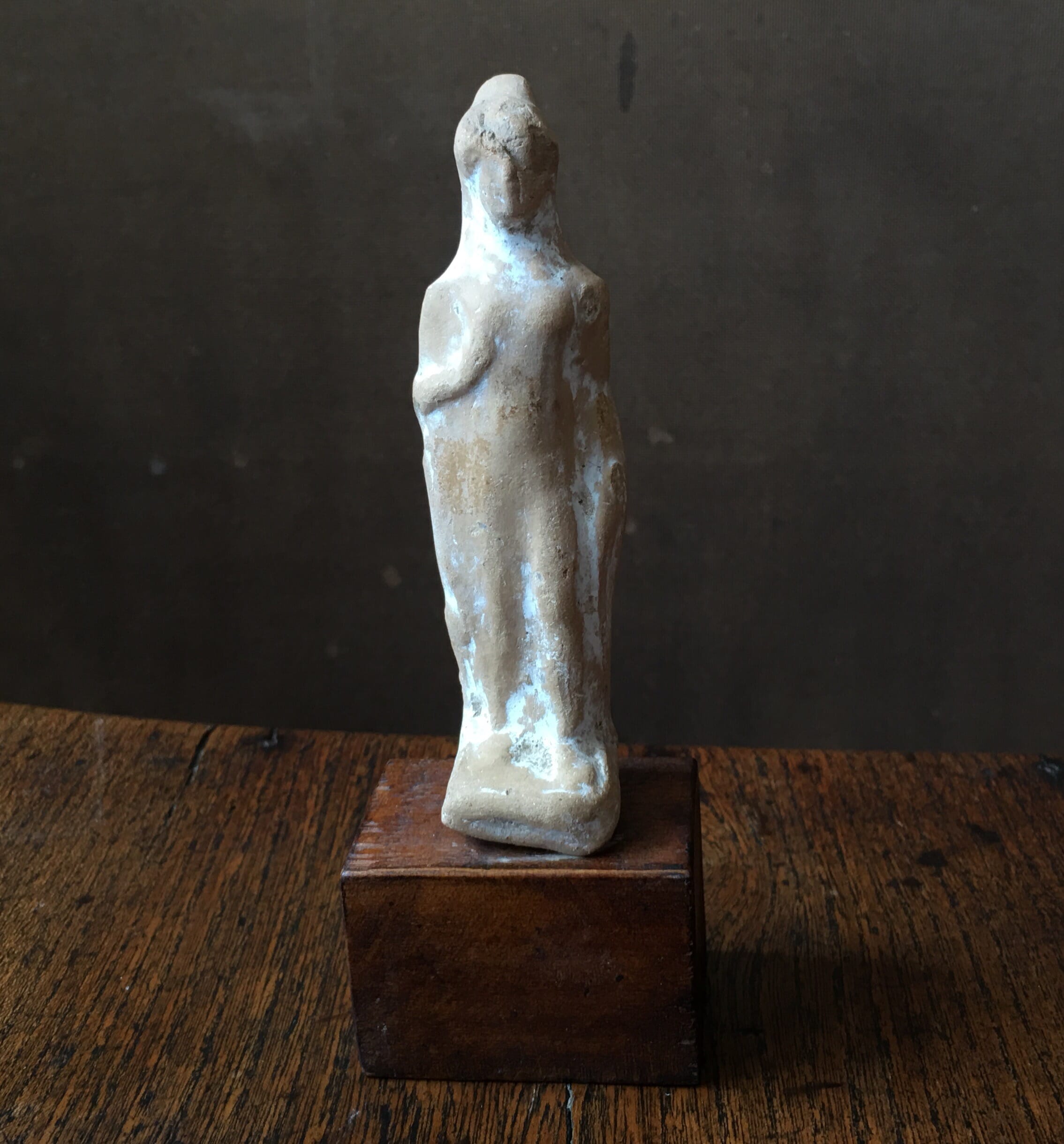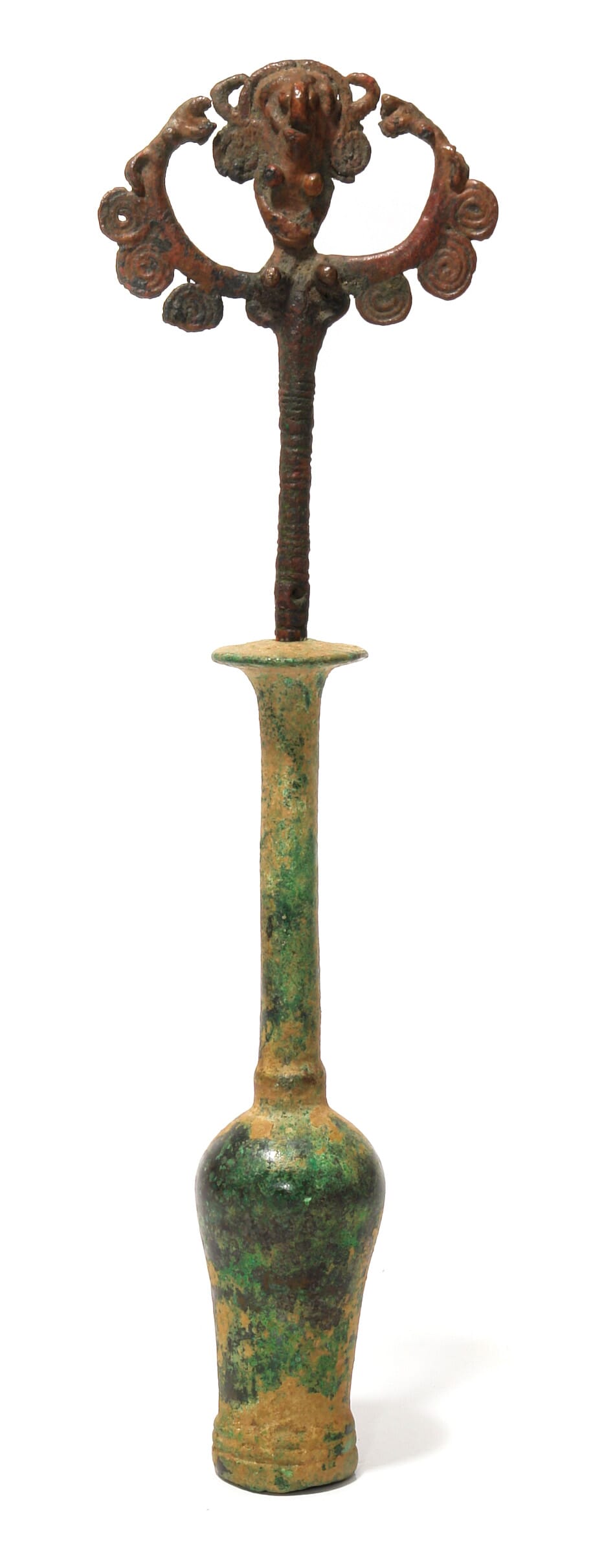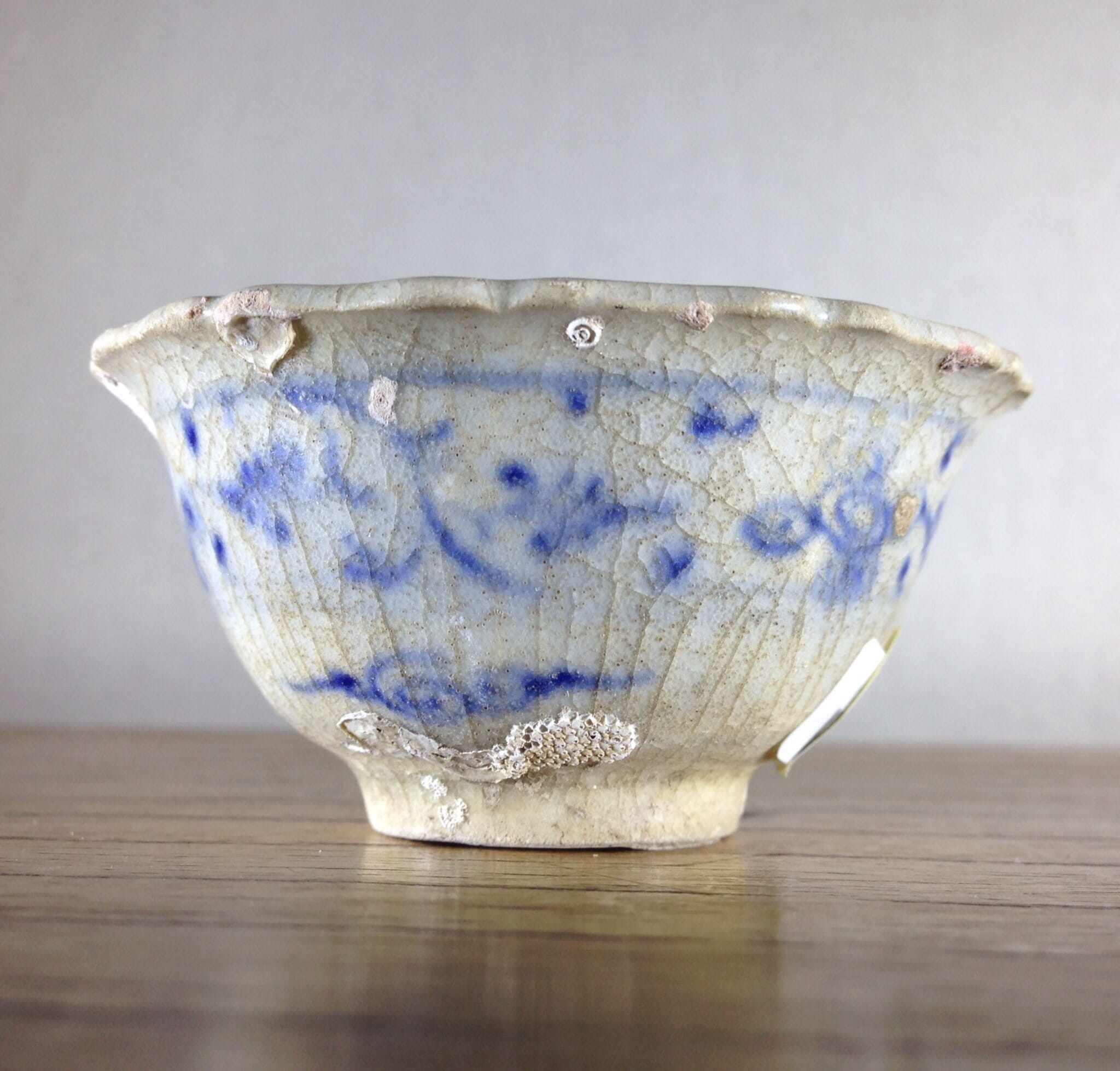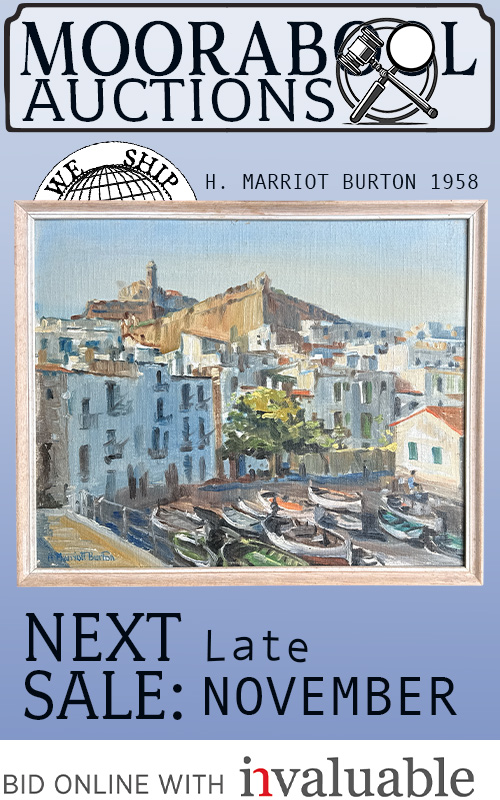Engraved West Australian Aboriginal pearlshell riji – jakoli, geometric meander engraving, earlier 20th century
Sold
Engraved West Australian Aboriginal pearlshell riji – jakuli pendant, engraved with a geometric meander with iron red ochre colouring, twin holes for suspension to the top.
Earlier 20th century
(or older)
Not mounted
21.5x16cm
Note: these items are decorative, not ‘sacred’ in their own right, but their meanings are on a personal level.
Condition: Original condition, chip top left, damages lower right edge. Displays well.
Variously known as riji or jakoli in WA, or Longka Longka in the central desert, these carved shells were important items for the First Nation men. Given to boys during their adulthood initiations, they were worn on strings as belt or neck ornaments. The pearlshell is a gold-lipped pearl oyster (Pinctada maximais), chosen as the glistening quality represents water, rain & lightning. The engraving reinforces this, representing the meandering watercourses of the outback – essential sources of sustenance & life. As highly prized items, they were traded for vast distances into the interior of Western Australia.
An 1818 encounter in WA by Louis de Freycinet as part of Nicolas Baudin’s expidetion described “An old man painted with stripes of various colors and distinguished from the rest by a shell hanging from his girdle”.
The chips are interesting; it’s recorded that the tribe’s magician could manipulate the weather – make it rain – by biting off sections of the shell edge. The ‘damage’ to this shell therefore shows it to be a well-used tool.
This example came from the personal collection of an interesting artist who spent some time with the Aboriginal tribes in remote Western Australia in the 1950’s-60’s. It was obviously an old piece then, and may date back into the 19th century.
| Condition | |
|---|---|
| Size | |
| References |










